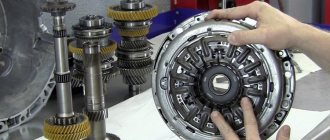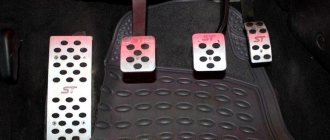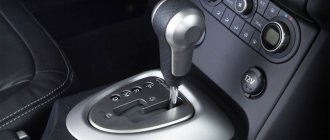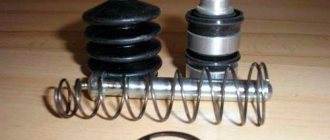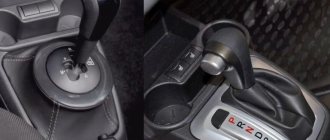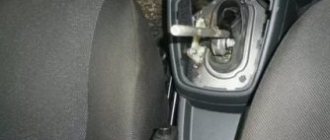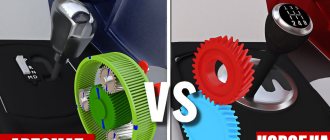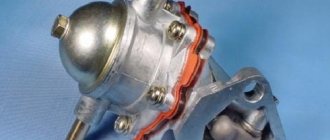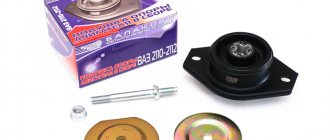Why “robots” with two clutches will soon supplant all other gearboxes
How the new Kia box works
DCT stands for Dual Clutch Transmission, that is, a transmission with two clutches. This is the first multi-disc box - an in-house development of Kia Motors from the Research and Development Center in Namyang.
As you might have already guessed, DCT is, in a certain sense, an analogue of the famous DSG gearbox from Volkswagen , which at first delighted customers with its agility and efficiency, then annoyed customers with breakdowns in its 7-speed version, and by 2014 finally lost its obvious design defects after a dozen modifications .
For the uninitiated, let us briefly explain that DCT is a “robot”, that is, structurally, it is a mechanical box with a control unit and actuators that change gears instead of the driver. What is “two clutches”? In short, there is generally only one clutch. It just has two driven disks - one transmits torque to the odd row of gears (1-3-5-7, etc.), the second to the even row (2-4-6, etc.).
The design is assembled in such a way that the clutch discs sit on one axis, and their shafts are nested one inside the other. The second shaft is longer than the first and passes through. Each of them drives its own row of gears: even and odd. Between these disks there is a drive disk - a flywheel that rotates the engine.
The clutch discs are engaged and disengaged electromechanically, which speeds up the switching process. But the main time saving when choosing a gear is in the so-called preselective mode of automatic transmission operation. To put it roughly, while, say, the first gear is engaged on an odd numbered row, on an even numbered row the second one is already prepared for engagement - when this is necessary, all that remains is to disconnect one clutch disc from the flywheel and attach another.
The electronic transmission control unit predicts the dynamics of movement - acceleration or braking, closing the drive of the next gear pair in advance. Both in up and down gear. Two processes, detaching one drive and attaching another, occur simultaneously.
As you can imagine, the design is incredibly complex. Minor deviations in the operation of the box for a fraction of a second or a fraction of a millimeter quickly lead to accelerated wear of the disks and unstable operation with shocks when moving, etc. Actually, the difficulties with setting up the electronics are largely responsible for the problems with the Volkswagen DSG gearbox.
In general, the scheme allows you to reduce the time for shifting gears to 100-200 milliseconds, provide smooth traction during acceleration and reduce fuel consumption, saving up to 10%. In the case of Kia, the stated savings are 5-7%.
History of preselective boxes
The very idea of using a multi-disc clutch was patented by the French engineer Adolphe Kegresse back in 1935. Monsieur Kegresse was generally a great talent and, in addition to the patent for what would become the DCT in the future, he also made the first SUV - the tracked Russo-Balt, which we will tell you about someday. But let's not get distracted. Due to the lack of technological capabilities, the idea of a dual-clutch transmission remained on paper.
In the 80s, Porsche engineers turned the idea into hardware and used the advanced development in circuit racing. However, significant dimensions, heavy weight and low reliability left the box at the prototype level, and it did not go beyond the race track. Similar attempts were made by the Peugeot and Audi rally teams, but it all ended in the same way - they refused to use it.
Since the mid-90s, VW began developing its version of a multi-disc automatic transmission under the abbreviation DSG (Direct Speed Gearbox). The result was a production gearbox that has been fitted to the Golf Mk4 R32 since 2003. The experience was so successful that other automakers became interested in it, and VW is improving this box to this day, installing it on almost all of its production cars.
At this stage, such boxes are divided into two types - dry and wet. With dry ones everything is clear by definition. The discs operate, as in a conventional manual transmission, on dry friction. When wet, the clutch discs are immersed in an oil bath. This was done for cooling at loads above 350 newtons per meter. Wet “robots” work with “torque” diesel engines and highly accelerated gasoline engines.
Let's talk about several typical representatives of the preselective family.
Audi S-Tronic
Initially, S-tronic was developed for high loads: limit values 550 N*m, 9,000 rpm. The designers had to provide two lubrication circuits. One is responsible for the operation of the control hydraulics and clutch, the other provides lubrication of the gearbox gears. Moreover, different oils are used. Since the density of torque converter oil can change at different temperatures, during aggressive operating conditions the oil pump has an additional vacuum booster that can increase the pressure for a short time.
Another feature is that the output shaft transmits rotation to the center differential, located directly in the automatic transmission housing itself. Depending on the settings, the differential can transfer from 35% to 85% of torque to the rear axle (60% by default).
Double clutch. What is it, the basic principle of operation. Plus detailed video
Due to many requests from my readers, I am starting to talk about robotic gearboxes. But this is the first article, it will be related to the double clutch, this is an “understanding” for subsequent articles, so that you can already imagine how a robot works with this system. And for general development, this is very useful information, so be sure to read and watch, at the end, as usual, there will be a video version...
Well, first of all, this is the information, many people ask me: “Sergey, please tell me, is it possible to install a double clutch on a manual gearbox? In particular, to our VAZ?”
I’ll answer right away: “Guys, maybe this is something that can somehow be tricked into our VAZES, but I haven’t seen such regular factory transmissions yet! Of course, there are videos on the Internet, like folk craftsmen doing shamanism, but normally for ordinary cars - I PERSONALLY HAVEN’T MEET IT! I haven’t seen it on foreign cars either! Therefore, 90% of the double clutch is installed on “robots” (robotic gearboxes). I’m leaving 10% for “suddenly”, maybe tomorrow our AVTOVAZ will start production!”
Okay, this question is closed, now let's get to the point, I offer some historical information.
History of appearance
The designer Adolf Kegress is rightfully considered the creator; it was he who first outlined the principle of double clutch in 1939. Later, its development in individual versions began to be used on racing tracks, on individual cars. But in widespread use, everything remained on paper. And only in 1980, Porsche took up these developments again.
It was this manufacturer who showed that it was possible to change gears under load, that is, the engine speed was practically not dropped. This development was truly revolutionary because it made it possible to reduce the effect of turbo lag , which is a huge problem for turbocharged engines. Now the switching occurred without jerks or dips, and therefore the torque was transmitted without loss.
Double clutch gearbox
Many people mistakenly believe that a double-clutch transmission is the same “mechanics” only with a “servo drive”. But this is not at all true - however, I can understand some “experts”; they judge by an ordinary robot, that is, which is equipped with an ordinary clutch, if you like - a single one.
Double clutch - makes changes not only to the design of the gearbox itself, but also to the design of the clutch disc (and here there are two of them).
If you take the gearbox itself and correlate it with the mechanics, it turns out that the manual transmission has one drive shaft and all the main gears are located on it. There is also one clutch disc + “basket”. This is a classic arrangement, but the dual clutch has a completely different design.
So: A complex, compound shaft is used here. If you like, this is a “shaft within a shaft.” Roughly, you can imagine it this way: a metal rod (which extends beyond the tube) is inserted into a metal tube and it rotates there. That is, both the tube and the shaft can rotate. This entire structure is this component element.
On one part of the shaft (let’s call it a “tube”), odd-numbered gears are installed, that is, these are the first – third – fifth gears. On the second part of the shaft (let it be a “rod”) there are even second – fourth – sixth gears.
If you want, a dual-clutch transmission combines the work of two manual gearboxes.
What happens in the final balance, everything is simple - these two “mechanical combined transmissions” work alternately, while one accelerates the car, the second is also involved, it already has gearing with the subsequent transmission.
That is, both first and second gears are switched on simultaneously when the car starts. Then the box switches to the second, and again immediately, the third is activated and so on. That is, the transmissions take place alternately.
There is also a part of the robotic system here, these are servo or electric drives, which precisely monitor switching and other actions (clutch discs, for example). There is no torque converter or belt here, as we say in an “ automatic or variator ”, yet the similarity is very great with mechanics.
Chinese DSG - what to expect from the robot on the new Haval F7?
The other day in Russia there was an official presentation of the new Haval F7 crossover model, and the main highlight of this car was its gearbox - a 7-speed robot with two wet clutches. Only a lazy reviewer did not gloat about the Chinese DSG, which does not inspire confidence. But is it really that bad and what should we expect from this box?
